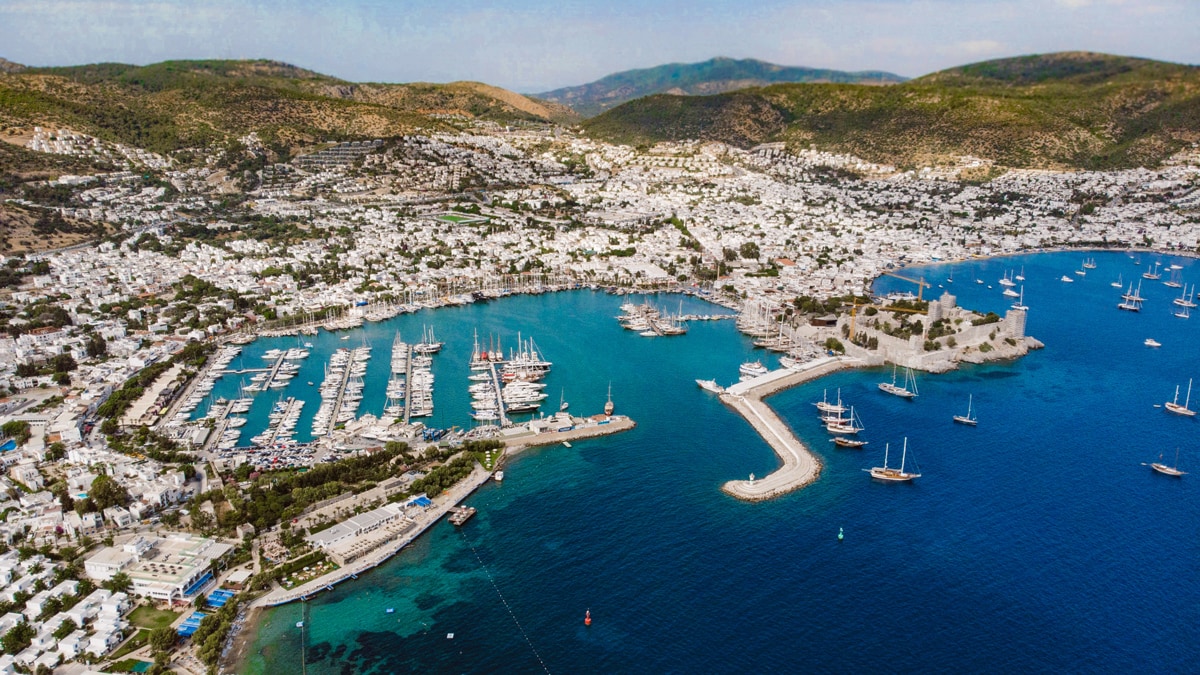BODRUM
In Halikarnassos (former name of Bodrum) BC. According to Herodotus, who was born in 484 and known as the "father of history", Bodrum was founded by the Dorians. Later, Carians and Lelegs settled in this region. In 650 BC, the Megarians came and expanded the city and changed its name to Halicarnassus. Bodrum BC In 386, it came under the rule of the Persians. It was captured by the Knights of Rhodes in 1415. In 1522, it joined the Ottoman Empire again during the reign of Suleiman the Magnificent.
After the proclamation of the Republic, its name was changed to Bodrum.
Bodrum Castle
Bodrum Castle was built on a rocky peninsula surrounded by sea on three sides, between two ports. It is connected to the land from the north. The castle shows a nearly square plan. It measures 180 x 185 meters. Its highest point is the French tower at 47.50 meters above sea level. Apart from this tower, there are four other towers, namely the English, Italian, German towers and the serpent tower. The parts of the castle outside the eastern wall were reinforced with a double body wall. Since the knights had a strong navy at sea, they believed that they could fend off an attack from the sea, so they left the sea walls weak and strengthened the land walls.
Bodrum Mausoleum
The construction of the Mausoleum, which is considered to be one of the seven wonders of the world, started during the time of Carian Satrap Mavsolos (approximately 355 BC), and after his death, his sister, Artemissia, who was also his wife, continued the construction. This work is a giant monumental tomb decorated with 36 columns in Ionic order, the original 46 meters high and crowned by a 21-step pyramid with a triumphal chariot on top. M.S. The ancient tomb, which was preserved until the 13th century, was first destroyed by an earthquake and then its stones were used in the construction of Bodrum Castle. In addition, many reliefs and sculptures belonging to this tomb were taken to the British Museum by the British archaeologist C. Newton in 1856. For this reason, most of the works belonging to this monument are exhibited in the British Museum, but only a few of them are exhibited in Bodrum.
Bodrum Antique Theater
It is one of the important ruins from the Hellenic period. Its capacity is 13,000 people. It consists of 3 main parts. These are the stage, the orchestra and the seating. The building is a long rectangular structure. There is a door at each end for the players to enter. Apart from these, there are 3 main entrance gates. After the excavations in 1973, it was organized as an open-air museum.
Bodrum Mindos Gate
Mindos Gate, one of the two entrance gates of Halicarnassus, is on the west side of Bodrum. Only remnants of the wall remain until today. Excavation and restoration work continues under the sponsorship of Turkcell. Alexander the Great entered the siege of the city through this gate in 333 BC. After a very tough resistance, he conquered the city and destroyed the entire city except the Mausoleum.





